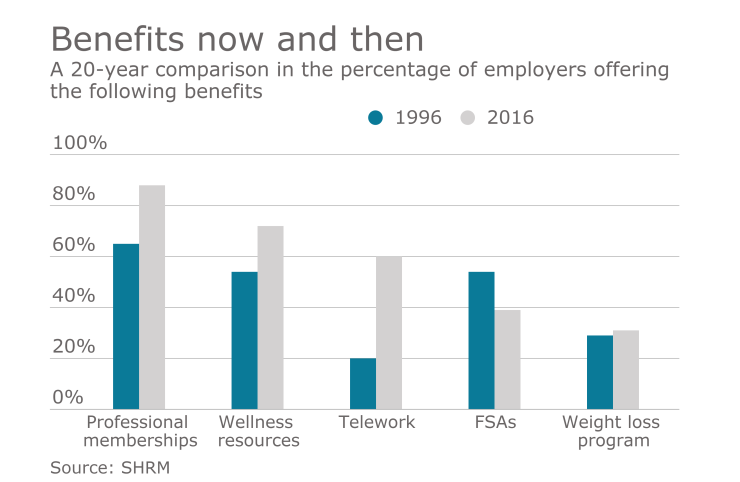Telecommuting benefits, employee bonuses and professional development opportunities are on the rise as employers look to use their programs more strategically to respond to changing workforce needs, according to the Society for Human Resource Management’s

Employers are responding to workers’ demands for better work/life balance with increased telecommuting, flextime and other accommodations. Since 1996, the percentage of organizations offering telecommuting has increased threefold (from 20% to 60%), and the percentage offering telecommuting on an ad hoc basis has increased from 45% in 2012 to 56% in 2016.
Additionally, while annual salary increases are a staple component of compensation plans, many employers have shifted toward monetary bonuses over the past five years to keep overall payroll costs stable. There have been increases for spot/bonus awards, sign-on bonuses for executives and non-executives and retention bonuses for nonexecutives. Also, more than one-half (56%) of organizations currently offer service anniversary awards, 51% offer nonexecutive bonus plans, and 44% offer executive incentive bonus plans.
“The biggest surprise was that, overall, while the number and types of benefits offerings that organizations offer has grown over the past 20 years, there have not been many major changes in terms of coverage of core employee benefits,” says Evren Esen, director of survey programs at SHRM. “Benefits such as healthcare, retirement planning and employee assistance programs are offered to employees at the same level as in 1996.”
SHRM is hosting its annual conference this week in Washington, D.C.




